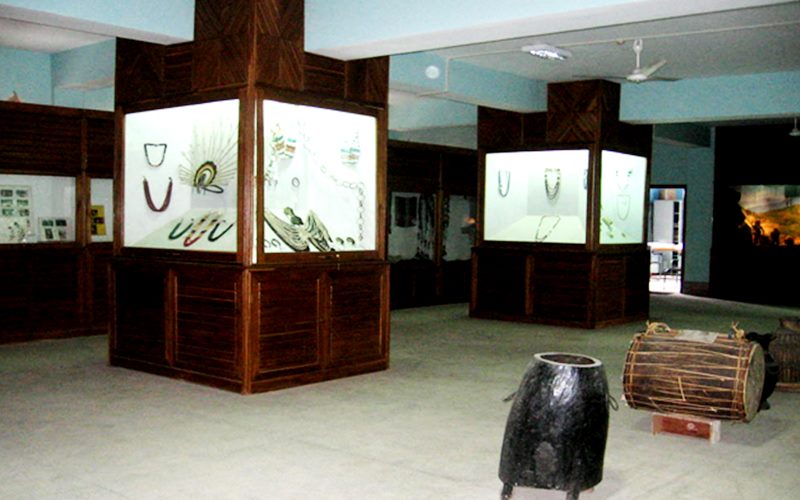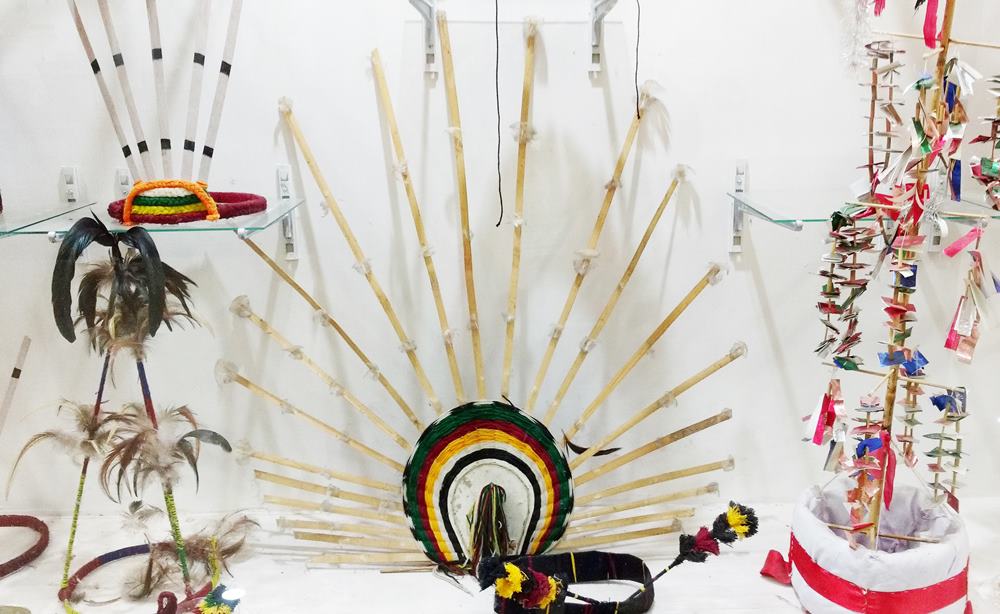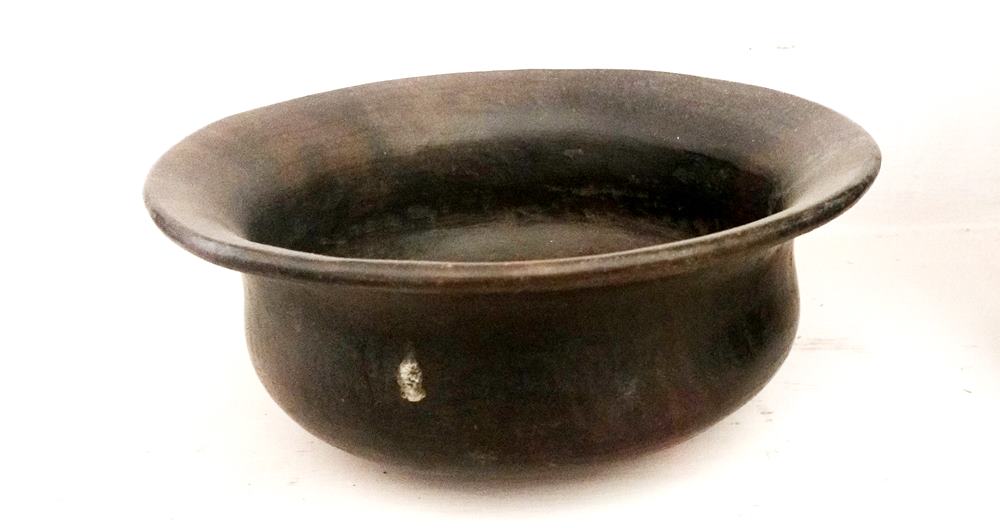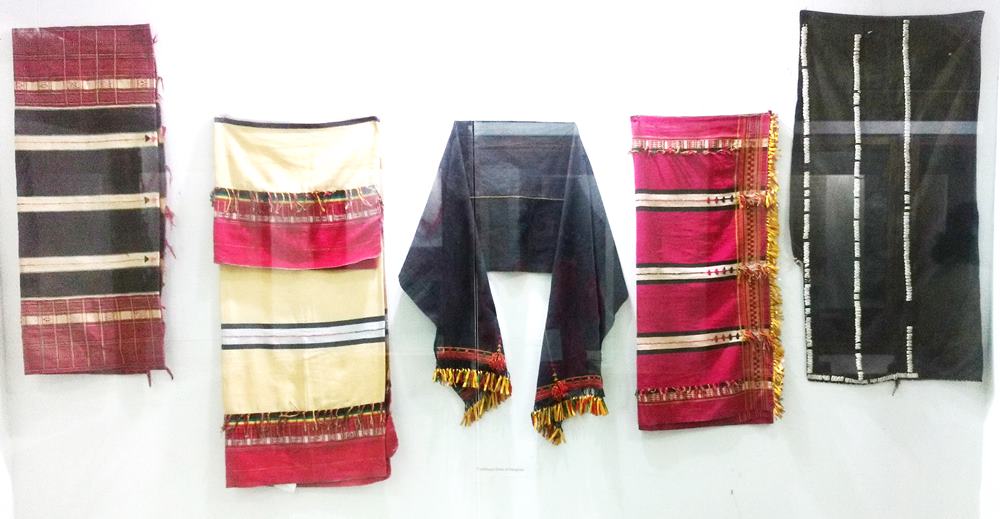The museum of the Tribal Research Institute (TRI) is a depository of information and artefacts belonging to some of the 34 recognised tribes of Manipur. It houses over 750 items, ranging from traditional dresses, textile materials, ornaments, weapons, utensils, basketry, and field implements. A diorama on 'Evolution of Man' is also on display here.
When you first enter TRI, you will see a huge map of Manipur identifying the many tribes and where they're originally from. Go up to the first floor and into the museum, and you can supplement that knowledge with small dolls of the various tribes. From the dominant Meiteis and Kukis to the Aimols and Kabuis, one can spend time absorbing the nuances of the traditional attire, and with some assistance from the people there, even get to know interesting stories about the reasons behind them.
The main room also showcases utensils and baskets made of cane, bamboo, and kouna (water reed), as well as other traditional daily use objects like a raincoat and a shield. Another room delves into the textiles of the different tribes in more detail, with samples of shawls, phaneks (wraparound skirts), and jackets identified and put on display. A third section is devoted to Nungbi Pottery or Black Pottery, as it is popularly called. The Tangkhul tribe's signature handicraft from the hilly Ukhrul District is unique by virtue of the process through which it is made. The black colour is not painted on, but is the result of a laborious technique involving chemical reactions between the rock powder, clay and fire.
The museum is worth a visit for those who take particular interest in anthropology, textiles, and craft.
24.818310710348, 93.94987923996


The museum has dolls adorned in traditional tribal dresses from around 26 tribes. The museum is working on adding the remaining dolls to complete the set of 34 recognised tribes of Manipur. These dolls and their dresses illustrate the different garbs of these communities, while also highlighting the unique weaving patterns that they can be identified by.

There is a section showcasing the elaborate headgear worn by the men and women of the various tribes of Manipur. There are over 50 such headgears on display. While taking a tour, be sure to inquire about the significance of the designs. In the picture, the headdress in the center belongs to the Angami Tribe. The rainbow colours are their signature pattern and signify a connection with nature.

Black Pottery from Manipur's Ukhrul region is very famous. The museum displays a wide selection of Black Pottery (also known as Nungpi Pottery) made by the Tangkhul Tribe. Pictured here is Kachor Ham, used by the Tangkhul villagers for cooking curry, preparing soup, etc.

Called nampho, this is a traditional Tangkhul raincoat made of beaded palm leaf needles. On top is a shield made of the same material, but woven more tightly to make it durable.

The museum has a separate room displaying the traditional weaves of the various tribes. Pictured here are the Rongmei Tribe's phanek (wraparound skirt) and shawl patterns.
